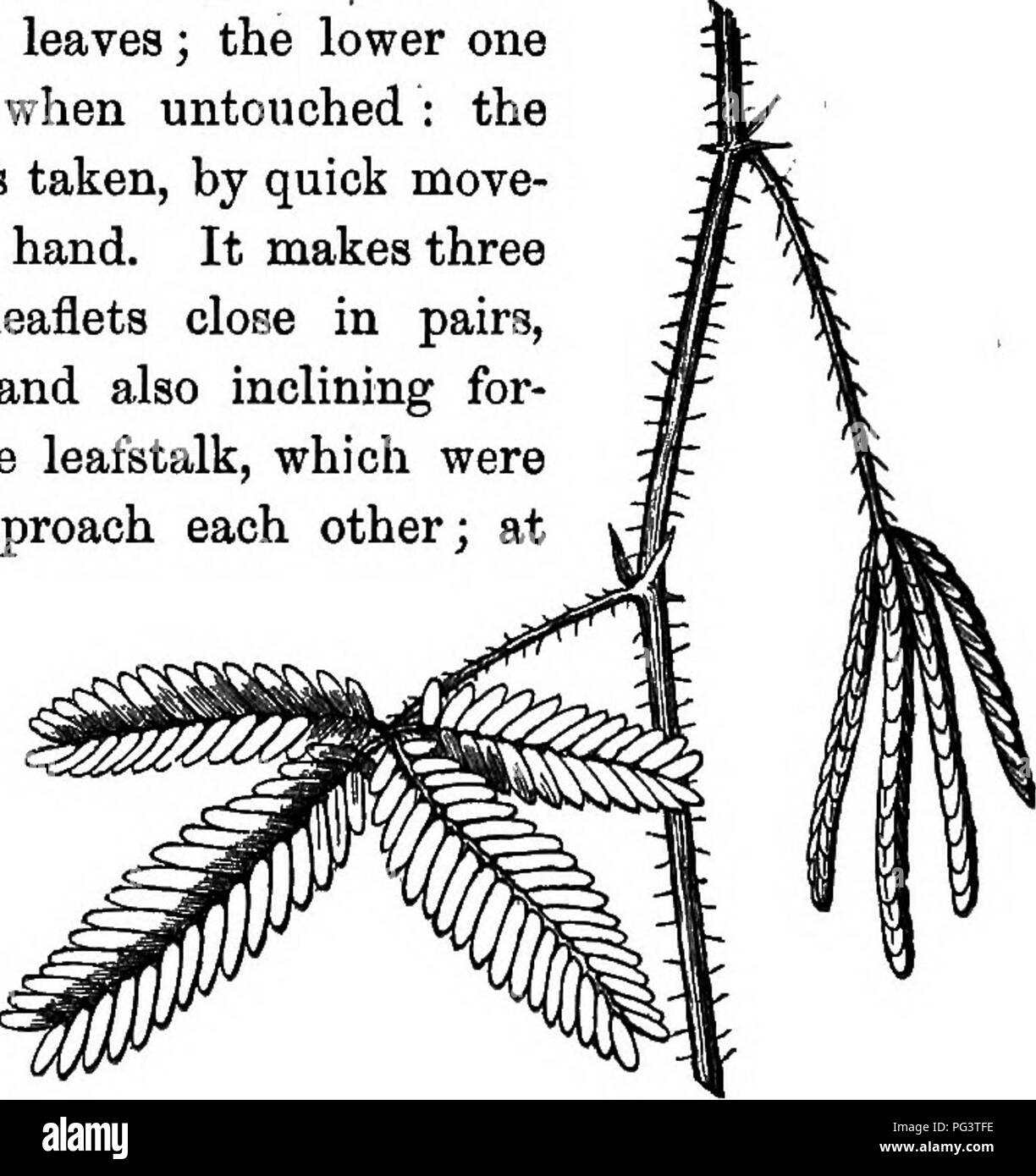. Botany for young people : Part II. How plants behave ; how they move, climb, employ insects to work for them, & c. Botany. HOW PLANTS BEHAVE, CHAPTER I. HOW PLANTS MOVE, CLIMB, AND TAKE POSITIONS. 1. Two plants — one of them common in cultivation, and the other rarer, but almost as easy to raise — are looked upon as vegetable wonders, namely, the Sensitive Plant and Desmodium gyrans. They are striking examples of 2. Plants that move their leaves freely and rapidly. In the well-known Sensitive Plant {Mimosa pudica) the foliage quickly changes its position when touched, appearing to shrink

Image details
Contributor:
Central Historic Books / Alamy Stock PhotoImage ID:
PG3TFEFile size:
7.1 MB (312.1 KB Compressed download)Releases:
Model - no | Property - noDo I need a release?Dimensions:
1534 x 1628 px | 26 x 27.6 cm | 10.2 x 10.9 inches | 150dpiMore information:
This image is a public domain image, which means either that copyright has expired in the image or the copyright holder has waived their copyright. Alamy charges you a fee for access to the high resolution copy of the image.
This image could have imperfections as it’s either historical or reportage.
. Botany for young people : Part II. How plants behave ; how they move, climb, employ insects to work for them, & c. Botany. HOW PLANTS BEHAVE, CHAPTER I. HOW PLANTS MOVE, CLIMB, AND TAKE POSITIONS. 1. Two plants — one of them common in cultivation, and the other rarer, but almost as easy to raise — are looked upon as vegetable wonders, namely, the Sensitive Plant and Desmodium gyrans. They are striking examples of 2. Plants that move their leaves freely and rapidly. In the well-known Sensitive Plant {Mimosa pudica) the foliage quickly changes its position when touched, appearing to shrink away from the hand. Fig. 1 represents a piece of stem with two (compound) leaves; the lower one expanded, as it is in sunshine and when untouched : the upper leaf shows the position which is taken, by quick move- ments, when roughly brushed by the hand. It makes three movements. First, the numerous leaflets close in pairs, bringing their upper faces together and also inclining for- wards; then the four branches of the leafstalk, which were outspread like the rays of a fan, approach each other; at the same time the main leafstalk turns downward, bending at its joint with the stem. So the leaf (for it is all one compound leaf) closes and seemingly collapses at the touch. In a short time, if left to itself, it slowly recovers the former out- spreading position. 3. The second plant, Desmodium Fig. 1. SenBitive Plant. gyrans (we have no common name for it), also belongs to the great Pulse Family, and flourishes in warm climates. It inhabits the warmer parts of India, but is. Please note that these images are extracted from scanned page images that may have been digitally enhanced for readability - coloration and appearance of these illustrations may not perfectly resemble the original work.. Gray, Asa, 1810-1888. New York : Ivison, Blakeman, Taylor